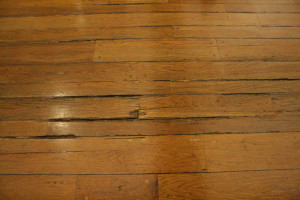Preventing cracks or buckling of wood planks
Your hardwood floor is a natural material that reacts to changes in environment. Wood flooring will change in dimension with variations in your home’s humidity levels. Some species change more than others with regards to dimension. We recommend the humidity fluctuate between 20 and 30 percent. If the humidity level in your home is below 20 or above 40 percent, you should start to monitor your floors and develop an action plan based on the continued data collection of your environment.
Before taking on a large remodel, assess your ability to control the humidity within the house. Depending on your needs, a permanent climate control system (i.e., a home humidifier) should be in place before the acclimation process begins. You can monitor your home’s humidity levels with a hygrometer, which can be purchased at Home Depot or Amazon for less than $10. All major plastering and painting should be completed before the wood is brought to your home, since they both create more moisture in the air.
During the winter when your home is heated, the air is drier. If the humidity level is not increased, the wood flooring can lose moisture and shrink or contract as a result. You could see gaps form between boards.
If you live in an area that has higher humidity levels during certain times of the year, or if you have moisture migrating from a crawl space or basement, you might see cupping or crowning of the wood planks. A dehumidifier might be necessary.
The acclimation process from the time the wood is delivered to its installation is typically around two weeks. We will take moisture readings before we install the product to ensure it meets the NWFA standards for moisture levels in this area.
Keeping your home humidity level at the recommended level is essential for keeping your hardwood floor looking great. Please call us if you have any questions about this.





